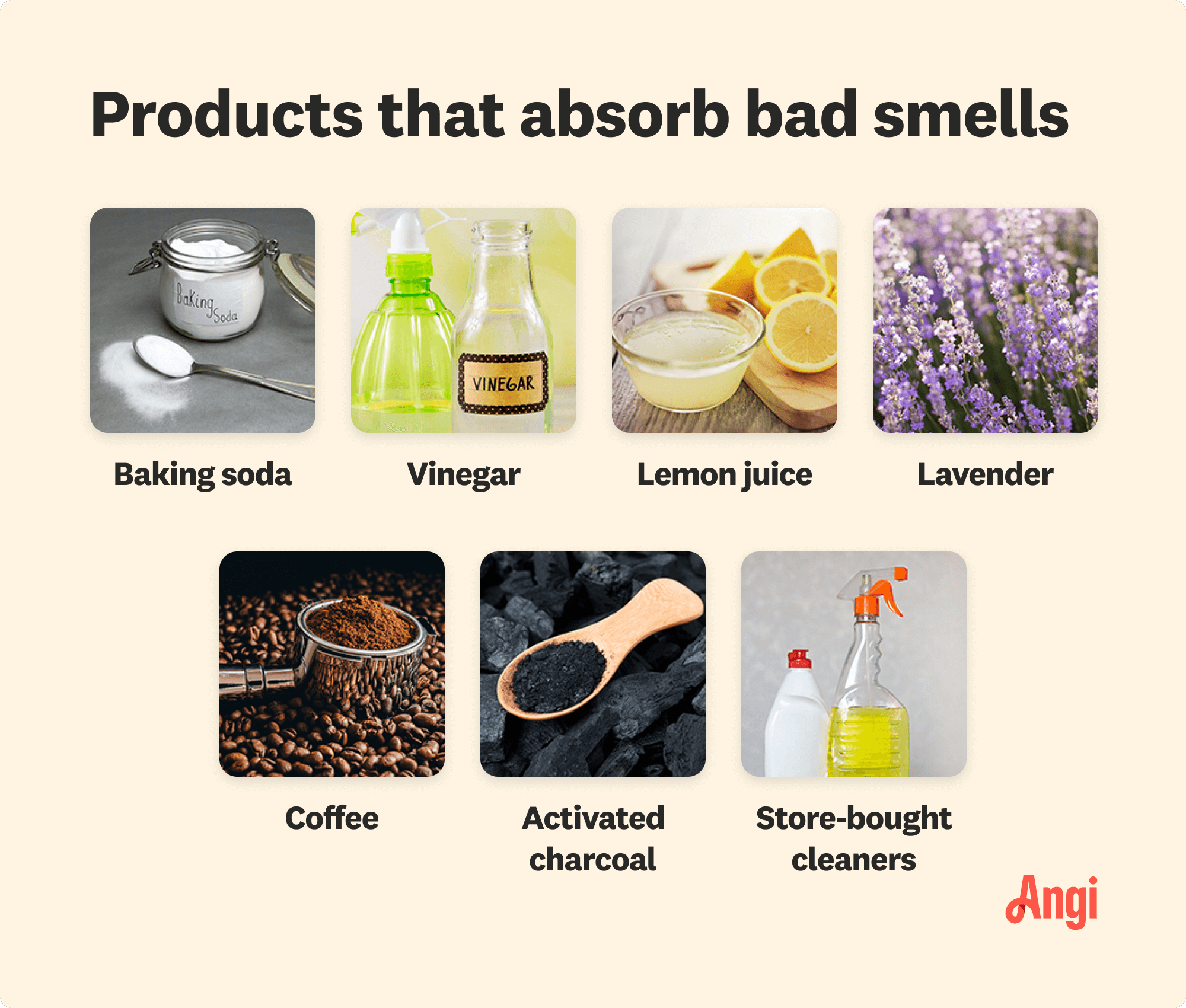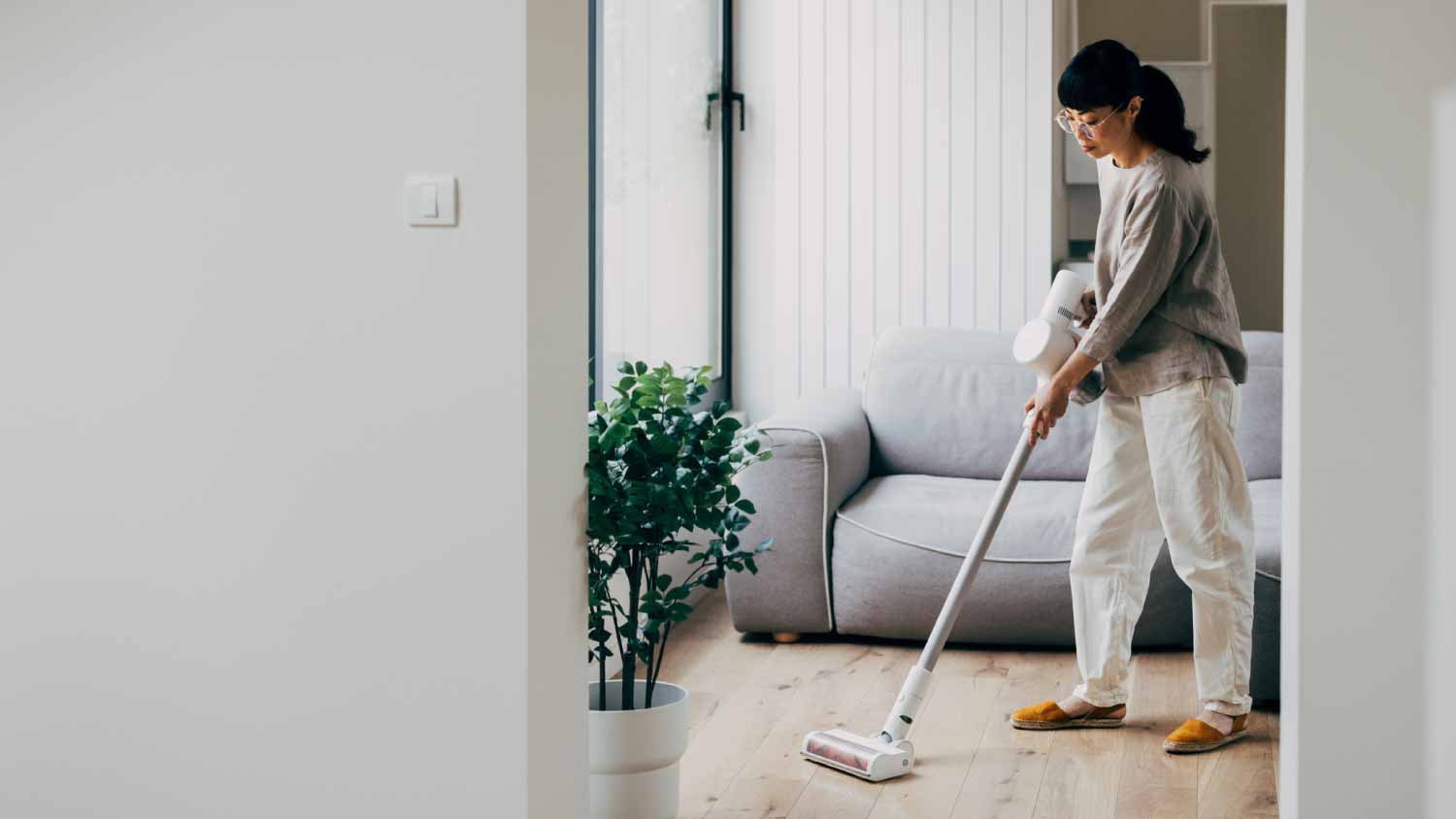
Clean walls are an important part of a well-kept house. Use this wall cleaning cost guide to see what it would cost to hire a professional to get the job done.
Because games are fun, but “what’s that smell?” isn’t one of them


Looking for ways to de-stink your home? Bad smells happen, but that doesn’t mean you have to live with them. Imagine being greeted by scents of lavender and citrus rather than stale pet dander or last night’s dinner. Here’s how to get rid of bad smells in your house, no matter what’s causing that stench.
Sometimes the source of a bad smell is easy to find: perhaps you left out a glass of milk on your nightstand or abandoned a full trash can while you went on vacation. But even if you take care of the issue, that smell can hang out long after you’ve identified it.
If you don’t have adequate airflow in your home or delay taking action on the stench, expect some stinky air to be an issue for a while. In this case, simple acts like opening a window can go a long way, if the weather allows.
However, if you’re not quite sure where that icky smell is coming from, and it just won’t go away, it could be a sign of a larger problem. Water damage, mold, persistent pet accidents, or a pest infestation can all cause some lingering foul odors. Consider this smell your first clue, and keep an eye out for any visible signs of mold, odd behavior from pets, or pests making your house their home.
If you can smell the odor and you can’t see it, usually that is a sign of something more serious. Mold can hide behind your walls and floors and will require a professional mold remediation company to run indoor air quality tests.
Whether you want to get rid of a musty or sour smell in your house, you need to identify where it’s coming from. Many different areas in the home can produce smells that are unpleasant, and simply lighting a candle won’t get rid of the smell itself; it will just cover it up.
While you should certainly follow your nose here, if you still can’t find the source of the stink, try some common problem areas like bathrooms, basements, crawlspaces, garages, trashcans, and behind appliances. You can also call a professional to help find the source of a bad odor.
Once you’ve identified the source of the stench, it’s time to get fresh air moving through your home. Open windows to get fresh air in and bad air out. Turning on the air conditioner or a fan can help, too.
With the windows open and the bad air moving out of the home, it’s time to get to work fighting the source of the bad smell. Wipe spills, clean stains, or scrub away messes that are causing the stench. If you’re not confident that you can clean regularly enough to keep odors at bay—or just aren’t quite sure where to start—a house cleaning company can help.

HEPA-certified air filters are a great resource because they help filter the air and eliminate bad smells. Of course, an air purifier is only as effective as its filter, so make sure you follow your air purifier’s guidelines and regularly change the filter. Most companies suggest changing it every three to six months for best results.
Once you’ve found the source of the smell, cleaned it up, and opened the windows, it’s a good time to put out or refresh odor neutralizers throughout the home to take care of any lingering smells. Use those coffee grounds or baking soda in bowls or jars, or place vases of lavender in each room. You can also rely on store-bought deodorizers and air fresheners. This step can help eliminate the old smell and keep new odors away.
The alkalinity of baking soda can neutralize odors in the air, so use this household product to your advantage. You can place an open box of it in your fridge, under your sink, or between your garbage can and the bag to help target problem areas. Cleaning your carpets with baking soda by sprinkling it over the affected area and then vacuuming it can also pull stubborn odors out of the materials. This is a particularly good option if your pets are the source of your bad smells.
Vinegar is highly acidic, which means it can kill bacteria and act as a DIY disinfectant, to some extent. Apply some vinegar to hard surfaces like countertops, the inside of your fridge, and even certain types of flooring to help eliminate bad odors. If the smell is coming from a sink drain, you can clean it with baking soda and vinegar for a one-two punch. Sprinkle some baking soda down the drain, pour some vinegar in, let it sit for 10 minutes, and then flush it out by running the water for 30 seconds.

Bad odors in your home often don’t pop up out of nowhere, but instead accumulate and worsen over time. If you notice that addressing specific areas with spot cleaning doesn’t quite do the trick, give your home a deep cleaning. Just doing the following can do wonders for the smell inside your house:
Clean carpets and upholstery with baking soda.
Mop hard floor surfaces with an appropriate cleaner.
Empty the P-traps under your kitchen and bathroom sinks.
Give the toilets a good scrubbing inside and out.
Catch up on any dirty laundry that has accumulated.
Clean your sheets, towels, and washcloths.
Deep clean your appliances inside and out to remove stuck-on food and oil.
Clean out the inside of your garbage cans with a disinfectant.
Consider getting your HVAC vents cleaned out.
If these tasks aren’t in your wheelhouse, or you don’t have the time, don’t hesitate to call in a professional cleaner to get rid of the odors for good. The cost of a house cleaner is often worthwhile, especially if it means avoiding the dirty work yourself.
Rotting food is a common source of bad odors in homes, so give some extra attention to your fridge. Remove all of the contents and discard anything that’s old or expired. Scrub any food remnants off of the shelves and inner walls with a disinfectant. While food in your freezer probably isn’t causing the odor, given the temperature, you might as well give that a good cleaning, too, just to be safe.
The upholstery on couches, recliners, and padded dining room chairs can hold onto foul odors, so don’t overlook them during your cleaning routine. Use an upholstery cleaner that’s safe for your material or some baking soda, and a vacuum to neutralize any contaminants that might be caught in the fabric. This tip might be your saving grace if you have pets that frequent the furniture, young kids that might unknowingly spill food or drinks on them, or smokers in your home.
This company is very responsible for every detail. And the good thing about this company, is they have a lot of resources in the house. I will continue working for w/ this company until they finish the timeline.
They responded quickly with an on-site estimate and the work was performed shortly thereafter. Clean-up and work was great.
Danette & Vanessa did a fantastic job deep-cleaning my apartment! I really appreciated their attention to detail and friendly attitude, plus of course their skill in making my home look brand new! I plan to have them back every 2 weeks for the foreseeable future!
Jeff and his assistant were very thorough, punctual, and professional. After their cleaning services carpet looks and smells terrific!!!
The service technician came to our home two days after the appointment was made. He was punctual, thorough, and knowledgeable. He inspected and cleaned debris out of the air conditioning unit.
From average costs to expert advice, get all the answers you need to get your job done.

Clean walls are an important part of a well-kept house. Use this wall cleaning cost guide to see what it would cost to hire a professional to get the job done.

Mattresses can trap dust mites, sweat, and dirt. Learn how to clean a mattress to reduce allergens and extend the life of your mattress.

How often should you deep clean your house? Learn what timing factors to consider before deep cleaning your home.

Cleaning your washing machine semi-regularly is important to your machine’s efficiency. Learn how to sanitize and disinfect a washing machine with bleach.

Ammonia for household use can help do everything from making the toughest chores a breeze to repelling pests of all sizes to even feeding your houseplants. Find out some of the best, most surprising ways to use ammonia around the house.

When a messy stove, sticky counter, and dirty dishwasher feel too overwhelming, grab this kitchen cleaning checklist to tackle the room with a plan.e sparkling year-round.